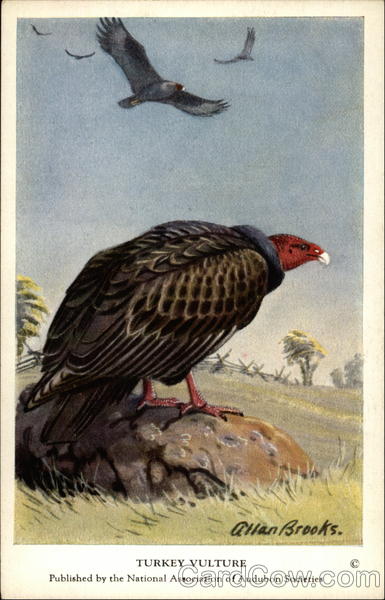Front:
Quan Brooks.
TURKEY VULTURE
Published by the National Association of Audubon Societies
Back:
No. 7 Turkey Vulture
Length 30 inches
The Turkey Vulture, otherwise called Turkey
Buzzard, is a familiar bird to most people in the
United States who spend much time in the open.
The grace and beauty of its flight do much to re-
deem its unpleasant feeding habits which are, nev-
ertheless, highly useful.
In some places, particularly in the South, it has
been regarded as an entirely beneficial scavenger;
again, in other parts of the country, it has been
condemned as a carrier of diseases affecting live
stock on the farms. The rapidity with which these
Vultures gather from far and near about the car-
cass of a dead animal has given rise to much
speculation as to which sense, sight or smell, con-
tributes most to the success with which the birds
find their food.
The Turkey Vulture usually nests on the
ground, in hollow trees, logs or stumps, although
occasionally in dense thickets, or in cavities in
limestone formation, as in Florida. The eggs are
a dull white with chocolate spots and blotches.
Classification: Order Raptores. Family Cathartida.
Scientific name: Cathartes aura.
Range: Western Hemisphere from southern Canada,
southward; northward to southern New York in the
Atlantic States.
No. 7 from set of 50 Winter Birds of the Northeastern United
States. Published by the National Association of Audubon So-
cieties, 1974 Broadway, New York City. Price per set, in a box,
$1.00 post paid.



